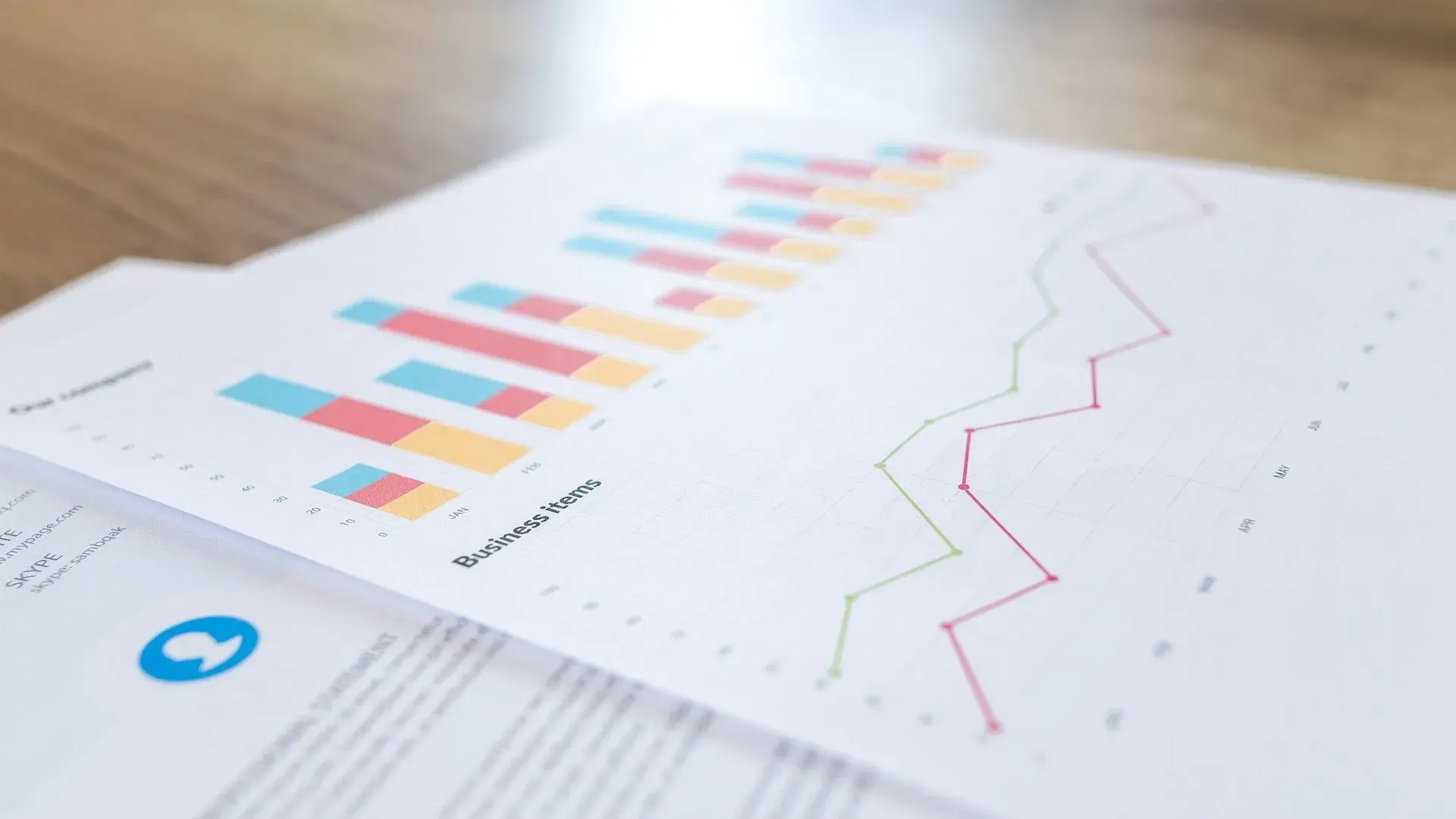How to Empower Your Marketing Team with Tableau Dashboards
In today’s competitive landscape, data-driven marketing is no longer a luxury—it's a necessity. Marketing teams are responsible for gathering insights from multiple sources, making sense of campaign data, and adjusting strategies based on real-time information. But often, marketers are bogged down by the sheer volume of data and the complexity of interpreting it.
That’s where Tableau dashboards come in. With Tableau, marketers can bring their data to life through interactive, visually compelling dashboards that empower teams to make informed decisions faster and more efficiently. In this article, we’ll explore how Tableau dashboards can transform the way your marketing team operates and how you can use them to drive better results.
1. Centralize Your Marketing Data
Marketing teams often rely on data from multiple platforms—Google Analytics, social media tools, email marketing systems, CRM platforms, and more. Managing and interpreting data from these disparate sources can be overwhelming and time-consuming. Tableau helps you overcome this challenge by allowing you to integrate multiple data sources into one unified dashboard.
For instance, you can pull data from Google Analytics, Facebook Ads, Salesforce, and HubSpot, all into one dashboard, providing a consolidated view of your marketing efforts. This centralized approach saves time and ensures your team has a holistic view of all their marketing data in one place.
2. Visualize Campaign Performance
One of the biggest challenges for marketing teams is tracking the effectiveness of multiple campaigns across various channels. With Tableau, you can create dynamic dashboards that allow you to visualize campaign performance in real-time.
For example:
- Conversion Funnel Dashboards: Track your funnel from lead generation to conversion, visualizing how prospects move through each stage.
- Ad Performance Dashboards: Measure ROI for each ad campaign, looking at cost-per-click (CPC), conversion rates, and overall revenue generated.
- SEO Dashboards: Track organic traffic growth, keyword rankings, and click-through rates to measure the success of your SEO efforts.
These visualizations help marketers easily identify which campaigns are performing well and which ones need adjustment, making it easier to allocate resources effectively.
3. Monitor Key Marketing Metrics in Real-Time
To keep marketing campaigns agile and responsive, marketers need access to real-time data. Tableau allows you to connect to live data sources, giving your marketing team the ability to track key metrics as they happen.
Some essential marketing metrics you can track in real-time using Tableau dashboards include:
- Website Traffic: Monitor the number of visitors, traffic sources, bounce rates, and session durations in real-time.
- Lead Generation: Track the number of leads coming in from different channels and measure the quality of those leads.
- Social Media Engagement: Measure likes, shares, and comments across social media platforms to gauge engagement and brand visibility.
- Return on Ad Spend (ROAS): Keep an eye on how much revenue your ads are generating versus the amount spent.
Real-time insights help marketers make data-driven decisions on the fly. For example, if a campaign underperforms, they can tweak it immediately based on what the data is telling them, instead of waiting for an end-of-week report.
4. Segment Data for Deeper Insights
Marketing isn’t one-size-fits-all, and Tableau makes it easy to segment data for more targeted insights. Whether you're segmenting by demographic, geography, channel, or behavior, Tableau dashboards allow you to filter and drill down into the data that matters most to your marketing strategy.
For example:
- Customer Demographics: Use Tableau to filter your data based on customer age, location, or purchase behavior, helping you understand who your audience is and how they interact with your campaigns.
- Geographical Analysis: Use heat maps to visualize the regions where your marketing campaigns are having the most impact, allowing you to target specific areas more effectively.
- Behavioral Segmentation: Track how different customer segments engage with your website or email campaigns, and optimize content for different audiences based on their behavior.
These segmentations enable your team to tailor campaigns more effectively, ensuring that each customer segment receives personalized content, messaging, and offers.
5. Track and Optimize Customer Journeys
Understanding the customer journey is vital for marketers. Tableau can help you track customer touchpoints, from the first interaction to conversion, so you can visualize the entire journey and identify potential drop-off points.
By creating a Tableau dashboard that tracks the customer journey, you can:
- Identify how customers discover your brand, whether through organic search, paid ads, social media, or referrals.
- Visualize how long it takes for customers to move from initial interest to conversion.
- Monitor key points in the funnel where customers are dropping off and optimize those touchpoints for better engagement.
Tracking customer journeys helps your team refine marketing strategies and improve the overall customer experience.
6. Create Custom Dashboards for Different Stakeholders
One of the most powerful aspects of Tableau is its ability to create custom dashboards for different stakeholders. This ensures that every member of your marketing team—and other departments—has the right data at their fingertips.
For example:
- A marketing director might need a high-level dashboard that provides a strategic overview of overall campaign performance, brand visibility, and marketing ROI.
- A social media manager could have a dashboard that tracks specific social media metrics like follower growth, engagement rates, and campaign-specific performance.
- A content manager might need a dashboard that tracks blog traffic, content shares, and the number of leads generated by different pieces of content.
Tailoring dashboards for specific roles ensures that everyone has access to relevant insights and can make data-driven decisions that align with their specific responsibilities.
7. Improve Collaboration Across Teams
Marketing is rarely a siloed activity—it often involves collaboration with other teams like sales, product, and customer service. Tableau dashboards can help improve collaboration by providing a shared view of marketing performance across the organization.
For example:
- Sales and marketing alignment: Use a Tableau dashboard to share lead generation metrics with the sales team, ensuring both teams are aligned on lead quality and conversion rates.
- Product feedback: Share customer behavior and feedback from marketing campaigns with product teams to help them understand what features or benefits customers are responding to.
- Executive reporting: Provide real-time access to key marketing metrics for executives, ensuring they are up to date on the impact of marketing strategies and ROI.
By making data more accessible and transparent, Tableau dashboards encourage collaboration and ensure everyone in the organization is working toward the same goals.
8. Monitor Long-Term Marketing Performance
While real-time data is essential for making immediate decisions, long-term data is just as crucial for assessing overall marketing strategy and ROI. Tableau allows you to monitor long-term trends and analyze performance over time.
For instance, you can create dashboards that:
- Track marketing spend and ROI over multiple quarters or years.
- Compare year-over-year performance for key campaigns or marketing channels.
- Monitor long-term trends in customer acquisition, engagement, and retention.
This helps your marketing team evaluate what’s working, what’s not, and how your strategies have evolved over time. It’s a powerful way to stay on track with your long-term marketing goals while continuously optimizing your tactics.
9. Predict Future Trends with Tableau’s Analytics Features
Tableau doesn’t just help you track what has happened—it also provides powerful tools for predictive analytics. Your marketing team can use Tableau’s built-in forecasting capabilities to predict future trends based on historical data.
For example:
- Use predictive analytics to forecast future traffic trends based on past campaign performance.
- Forecast sales conversions based on current marketing activity.
- Anticipate customer behavior trends based on demographic and behavioral data.
By leveraging Tableau’s forecasting tools, your marketing team can proactively adjust campaigns, optimize spend, and plan future strategies based on data-driven predictions.
10. Empower Your Team to Make Data-Driven Decisions
At the heart of Tableau’s power is its ability to empower marketing teams to make data-driven decisions. With visually compelling dashboards, real-time insights, and predictive analytics, your marketing team can move away from gut-feel decisions and base their strategies on solid data.
Tableau dashboards enable marketers to understand campaign performance, optimize strategies, and make quick adjustments to drive better results—all backed by data. By empowering your team with the tools they need to succeed, you’re giving them the ability to turn data into actionable insights that enhance marketing effectiveness.
Tableau dashboards are a game-changer for marketing teams, allowing them to centralize their data, visualize campaign performance, track real-time metrics, and collaborate effectively with other departments. By empowering your marketing team with data-driven insights, you’ll optimize campaigns, improve customer journeys, and drive better results across the board.
At Arctic Analytx, we specialize in helping marketing teams implement and optimize Tableau for their unique needs. Contact us today to discover how Tableau can empower your marketing team and transform your data into a competitive advantage.



